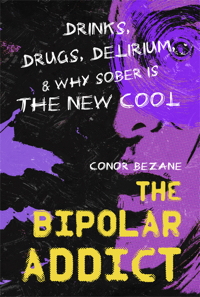 When you’re first diagnosed with bipolar disorder, it can take up to a year or more to get on the right medication cocktail. It was a year before my doctor prescribed lithium, which ended up being the magic bullet that ended my depression.
When you’re first diagnosed with bipolar disorder, it can take up to a year or more to get on the right medication cocktail. It was a year before my doctor prescribed lithium, which ended up being the magic bullet that ended my depression.
But what if you could feel results instantaneously?
Clinical trials conducted by Tal Medical have shown a rapid success at treating both bipolar disorder and major depressive disorder.
The treatment is called “low field magnetic stimulation,” or LFMS.
Michael Rohan, a physicist at McLean Hospital’s Brain Imaging Center and a lecturer at Harvard Medical School, designed the initial device used in this treatment. It is being reproduced by medical device company Tal Medical for further clinical trials.
“LFMS appears to have an immediate effect on mood and thus has the potential to provide relief in emergency situations,” Rohan told the Harvard Gazette. “In addition to providing quick relief from symptoms, the other exciting piece about LFMS is that no side effects have been observed.”
Tal Medical developed a portable LFMS device, testing it on 63 depressed patients. Each person was given a 20-minute procedure in which some underwent a full treatment, while others received a placebo, involving the use of LFMS without electromagnetic fields.
When the results came in, researchers realized that patients who had undergone full LFMS showed improved moods. They were also able to become happier faster than those who had undergone the placebo, according to Medical Daily.
LFMS sounds like a similar style of treatment as Transcranial Magnetic Stimulation (TMS), but researchers say it is completely different. While TMS uses magnetic fields to stimulate nerve cells in the brain in order to alleviate depression, LFMS uses magnetic fields that are a small percentage of the strength but at a higher frequency than TMS. An older technology, ECT (electroconvulsive therapy) also stimulates the brain, but using pulses of electricity.
Researchers in a study published by the scientific journal Biological Psychiatry accidentally ascertained that this combination of low power and high frequency improved moods in depressed bipolar patients faster than any other treatments.
“The idea that weak [electromagnetic] stimulation of the brain could produce beneficial effects on depression symptoms is somewhat surprising,” Dr. John Krystal, editor of Biological Psychiatry, said in a press release. “Yet, the data make a compelling case that this safe approach deserves further study.”
The research continues with a study by Tal Medical of 120 patients to determine dosing, according to a press release. Data are expected in early 2017.








This sounds really cool. Wondering, though, if there are any downsides (like memory loss with ECT). I’d be interested in giving this a shot once it became an approved treatment. Anything to help alleviate depression that isn’t more meds is worth trying in my book.